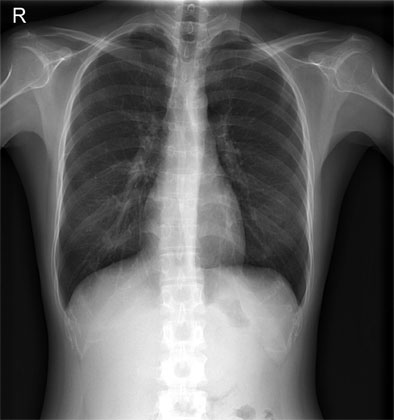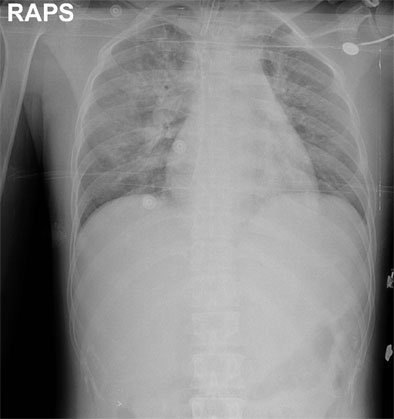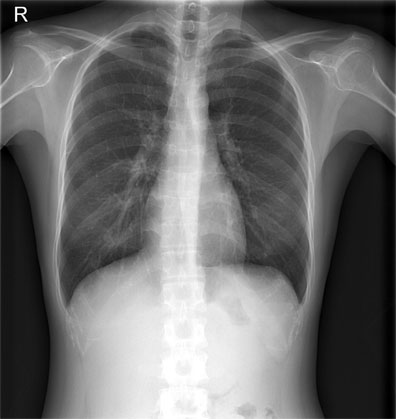Yonsei Med J.
2008 Aug;49(4):676-679. 10.3349/ymj.2008.49.4.676.
Pulmonary Edema after Catastrophic Carbon Dioxide Embolism during Laparoscopic Ovarian Cystectomy
- Affiliations
-
- 1Department of Anesthesiology, School of Medicine, The Catholic University of Korea, Seoul, Korea. lehaji@catholic.ac.kr
- KMID: 1793208
- DOI: http://doi.org/10.3349/ymj.2008.49.4.676
Abstract
- Laparoscopy is a surgical procedure used both for diagnosis and for various treatments. A rare but sometimes fatal complication of laparoscopy is pulmonary embolism with CO2 resulting in pulmonary edema. During laparoscopic gynecological surgery in a 29-year-old woman who had previously undergone lower abdominal surgery, the end-tidal CO2 suddenly increased from 40mmHg to 85mmHg and then decreased to 13mmHg with hemodynamic deterioration. These events are characteristic of a CO2 embolism. When this occurred, CO2 insufflation was immediately stopped and the patient was resuscitated. The patient's condition gradually improved with aggressive treatment, but the clinical course was complicated by bilateral pulmonary edema. This case of pulmonary edema was soon resolved with supportive management. The formation of a CO2 embolism during laparoscopy must be suspected whenever there is a sudden change in the end-tidal CO2. In addition, the possibility of pulmonary edema should be considered when a CO2 embolism occurs.
MeSH Terms
Figure
Reference
-
1. Gutt CN, Oniu T, Mehrabi A, Schemmer P, Kashfi A, Kraus T, et al. Circulatory and respiratory complications of carbon dioxide insufflation. Dig Surg. 2004. 21:95–105.
Article2. Cottin V, Delafosse B, Viale JP. Gas embolism during laparoscopy: a report of seven cases in patients with previous abdominal surgical history. Surg Endosc. 1996. 10:166–169.3. Haroun-Bizri S, ElRassi T. Successful resuscitation after catastrophic carbon dioxide embolism during laparoscopic cholecystectomy. Eur J Anaesthesiol. 2001. 18:118–121.
Article4. Root B, Levy MN, Pollack S, Lubert M, Pathak K. Gas embolism death after laparoscopy delayed by "trapping" in portal circulation. Anesth Analg. 1978. 57:232–237.
Article5. Clark MC, Flick MR. Permeability pulmonary edema caused by venous air embolism. Am Rev Respir Dis. 1984. 129:633–635.6. Lam KK, Hutchinson RC, Gin T. Severe pulmonary oedema after venous air embolism. Can J Anaesth. 1993. 40:964–967.7. Butler BD, Hills BA. The lung as a filter for microbubbles. J Appl Physiol. 1979. 47:537–543.
Article8. Souders JE. Pulmonary air embolism. J Clin Monit Comput. 2000. 16:375–383.9. Geissler HJ, Allen SJ, Mehlhorn U, Davis KL, Morris WP, Butler BD. Effect of body repositioning after venous air embolism. An echocardiographic study. Anesthesiology. 1997. 86:710–717.10. Flick MR, Hoffel JM, Staub NC. Superoxide dismutase with heparin prevents increased lung vascular permeability during air emboli in sheep. J Appl Physiol. 1983. 55:1284–1291.
Article
- Full Text Links
- Actions
-
Cited
- CITED
-
- Close
- Share
- Similar articles
-
- Cardiac Arrest due to Carbon Dioxide Embolism During Laparoscopic Gynecologic Surgery of a Patient with Previous Abdominal Surgery: A Case Report
- Carbon Dioxide Embolism during Laparoscopic Surgery
- Cardiac arrest associated with carbon dioxide gas embolism during laparoscopic surgery for colorectal cancer and liver metastasis: A case report
- Detection of paradoxical carbon dioxide gas embolism with opening of patent foramen ovale by perioperative transesophageal echocardiography during laparoscopic hepatectomy - A case report -
- A case report of a carbon dioxide embolism caused by endoscopic vein harvesting during cardiac surgery: A case report




